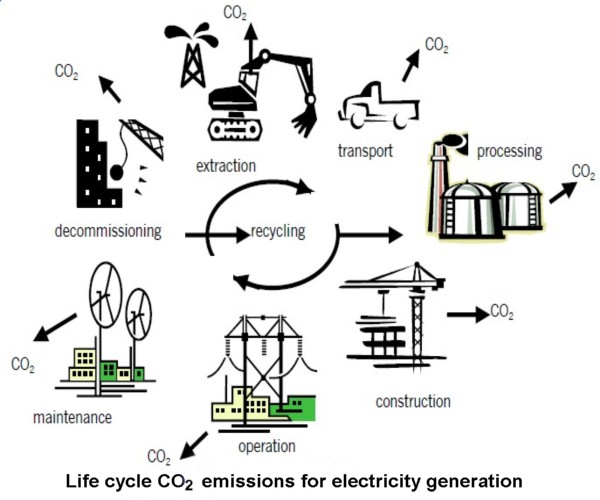Existing Electricity Infrastructure in NSW
Large conventional coal fired power stations represent 65% of NSW electricity generation capacity; hydro electricity 22%; gas 11%; (including natural gas, coal-seam gas and landfill and sewerage methane). Other sources, including wind and solar, presently represent less than 2% of installed capacity, although some quite large wind installations are planned/ proposed, the largest being a proposed 1,000MW wind farm near Silverton to cost $2.5 billion.
The actual electricity generated (and delivered) by a given installed capacity differs significantly from one technology to the next. For example conventional coal has a high ‘base load’ capacity utilisation and provides about three quarters of the electricity produced. Intermittent solar and wind capacities need to be divided by as much as 5 to be comparable with other technologies that are continuously available.
A number of the new projects (blue shaded below) are still highly speculative and/or face challenges to financial backing; engineering and grid connection hurdles; and/or local environment/planning/land ownership issues.
There are already around a hundred and sixty feed-in generators in operation in NSW (as set out below) and more than a hundred new generators planned or announced (prior to the recently announced chances to the feed in tariff):
|
Technology |
Locations |
Capacity (MW) |
% |
Planned |
Capacity (MW) |
|
Large conventional coal (over 20MW) |
8 |
12,600 |
64.7% |
6 |
6,400 |
|
Hydro |
17 |
4,300 |
22.1% |
27 |
53.7 |
|
Natural Gas |
10 |
2,033 |
10.4% |
18 |
5,649 |
|
Coal-seam gas |
4 |
110 |
0.6% |
||
|
Landfill and sewerage methane |
12 |
71 |
0.4% |
||
|
Wind |
10 |
149 |
0.8% |
33 |
2,891 |
|
Biomass (agricultural waste) |
38 |
130 |
0.7% |
13 |
173 |
|
Distillate |
1 |
50 |
0.3% |
2 |
240 |
|
Solar |
55 |
29 |
0.1% |
11 |
120 |
|
Geothermal |
|
1 |
20 |
Except for hydro, solar and wind, all of these directly produce CO2. But those burning methane are disposing of an even more greenhouse active gas and have a positive impact on climate change reduction. They generally qualify as ‘green technologies’.
Solar and wind are presently exceedingly capital intensive per GWh produced due to their intermittent nature and low utilisation. There is potential for new photo-voltaic technologies (eg on glass or plastic) to lower these costs but such technologies are not yet commercial. As this capital equipment is very substantially imported, the CO2 produced as a result of manufacturing is released overseas. But wind, in particular, is responsible for quite significant local CO2 release due to very high transport and installation costs (including the construction of extensive concrete foundations) and ongoing maintenance.
Simply to keep up with growth (and without replacing antiquated plant) NSW needs to add around an additional 500MW of generation per year. Several of the existing alternatives to coal (hydro, landfill etc) are based on limited resources. It can be seen from the above table that the principal technologies expected to make a significant and immediate contribution, in the quantum required to accommodate growth, are conventional coal fired power and gas (from various sources).

In practical terms, and notwithstanding climate change or the Carbon Pollution Reduction Scheme, the short and medium prospect is for a significant increase in CO2 production in NSW due to electricity generation.
